Jetpack Compose and SwiftUI-based Kotlin Multiplatform sample project (based on TMDB API).
| Purpose | Tool used | Purpose | Tool used |
|---|---|---|---|
| Framework | Kotlin Multiplatform | Database | SQLDelight |
| Android UI | Jetpack Compose | Encryption | SQLCipher |
| iOS UI | SwiftUI | Serialization | Kotlinx Serialization |
| Lifecycle | KMM-ViewModel | BuildConfig | BuildKonfig |
| Multi-threading | KMP-NativeCoroutines | Logging | Napier |
| DI | Koin | Lint Check | Detekt |
| Networking | Ktor | Image Loading | Coroutine Image Loader |
| Testing (Common) | Mockative | Testing (HTTP) | Ktor Mock |
| Testing (Android Unit) | Mockk | Testing (Android Instrumented) | AndroidJUnit4 |
In this project, KMP-NativeCoroutines is used, to work with flows in iOS. It is an open-source solution that supports cancellation and generics with flows, which the Kotlin/Native compiler doesn't yet provide by default. It helps to consume suspending functions and flows from iOS. It directly supports the async/await, Combine, and RxSwift approaches to concurrency. KMP-NativeCoroutines has built-in support for KMM-ViewModel, also used in this project to create a common ViewModel. Coroutines inside your KMMViewModel will (by default) use the CoroutineScope from the ViewModelScope.
SQLCipher is a standalone fork of the SQLite database library that adds 256 bit AES encryption of database files.
There is currently a CI failure for IOS build due to SQLCipher which has been reported here: sqlcipher/sqlcipher#502. The build is otherwise working fine locally.
flowchart LR
A[Push to 'main'] -->|Commit| Z{Trigger keyword found?}
Z --> |Yes|B[Trigger Workflows]
B --> D[Run Common Tests - KMP Android & KMP iOS]
B --> E[Run Android Tests - Unit & Instrumented]
B --> F[Run iOS Tests - Simulator]
B --> G[Generate Android Build]
B --> H[Generate iOS Build]
E --> I[Upload & Publish Test Reports]
D --> J[Upload Test Reports]
F --> K[End]
G --> K[End]
H --> K[End]
I --> K[End]
J --> K[End]
| Section | Status |
|---|---|
| Database DAO | Done ✅ |
| Network Source | Done ✅ |
| Repository | Done ✅ |
| Database Fetch UseCase | Done ✅ |
| Section | Status |
|---|---|
| Check Encryption Passphrase UseCase | Done ✅ |
| Enable Encryption UseCase | Done ✅ |
| Section | Status |
|---|---|
| SQLDelight Cipher Encryption | Done ✅ |
| Check Encryption Passphrase UseCase | Done ✅ |
| Enable Encryption UseCase | Done ✅ |
The codebase completely follows Uncle Bob's style!
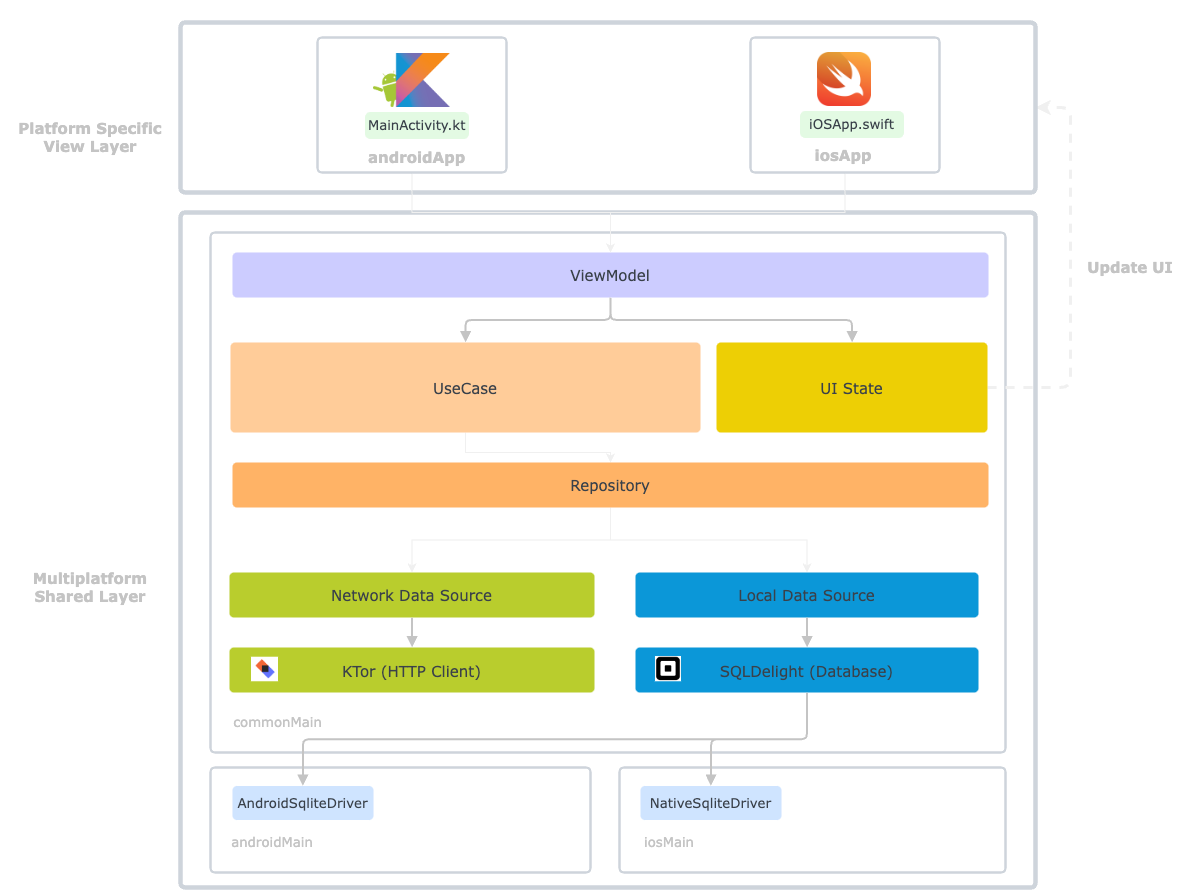 |
The project has referred to multiple blogs and open-source resources for learning purpose. The most important are:
- BikeShare by John O'Reilly - Good use of KMMViewModel along with Native Coroutines.
- HarvestTimeKMP by the amazing team at Mutual Mobile: Anmol Verma, Shubham Singh, Yugesh Jain & others - A good Clean Architecture with KMM project.
- NoteDelight by Artur Babichev - Amazing use of Database encryption with Cipher.
- KaMPKitSQLCipher by the Touch Lab.
- Multiplatform Encryption with SQLDelight and SQLCipher by Sam Hill
- SQLCipher and KMM by Kevin Galligan
Before you start, use the KDoctor tool to ensure that your development environment is configured correctly:
-
Install KDoctor with Homebrew:
brew install kdoctor -
Run KDoctor in your terminal:
kdoctorIf everything is set up correctly, you'll see valid output:
Environment diagnose (to see all details, use -v option): [✓] Operation System [✓] Java [✓] Android Studio [✓] Xcode [✓] Cocoapods Conclusion: ✓ Your system is ready for Kotlin Multiplatform Mobile development!
Otherwise, KDoctor will highlight which parts of your setup still need to be configured and will suggest a way to fix them.
| Home (iOS) | Home (Android) |
|---|---|
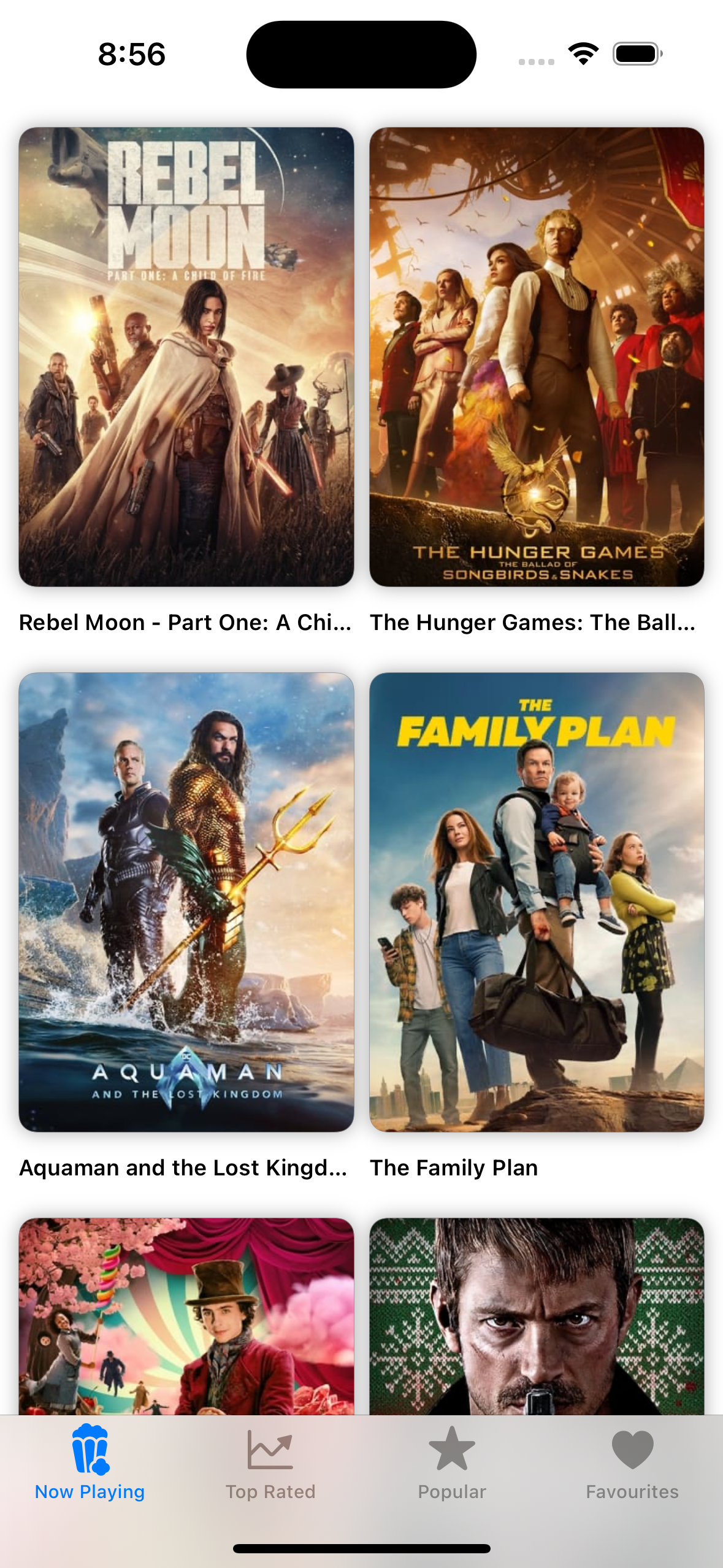 |
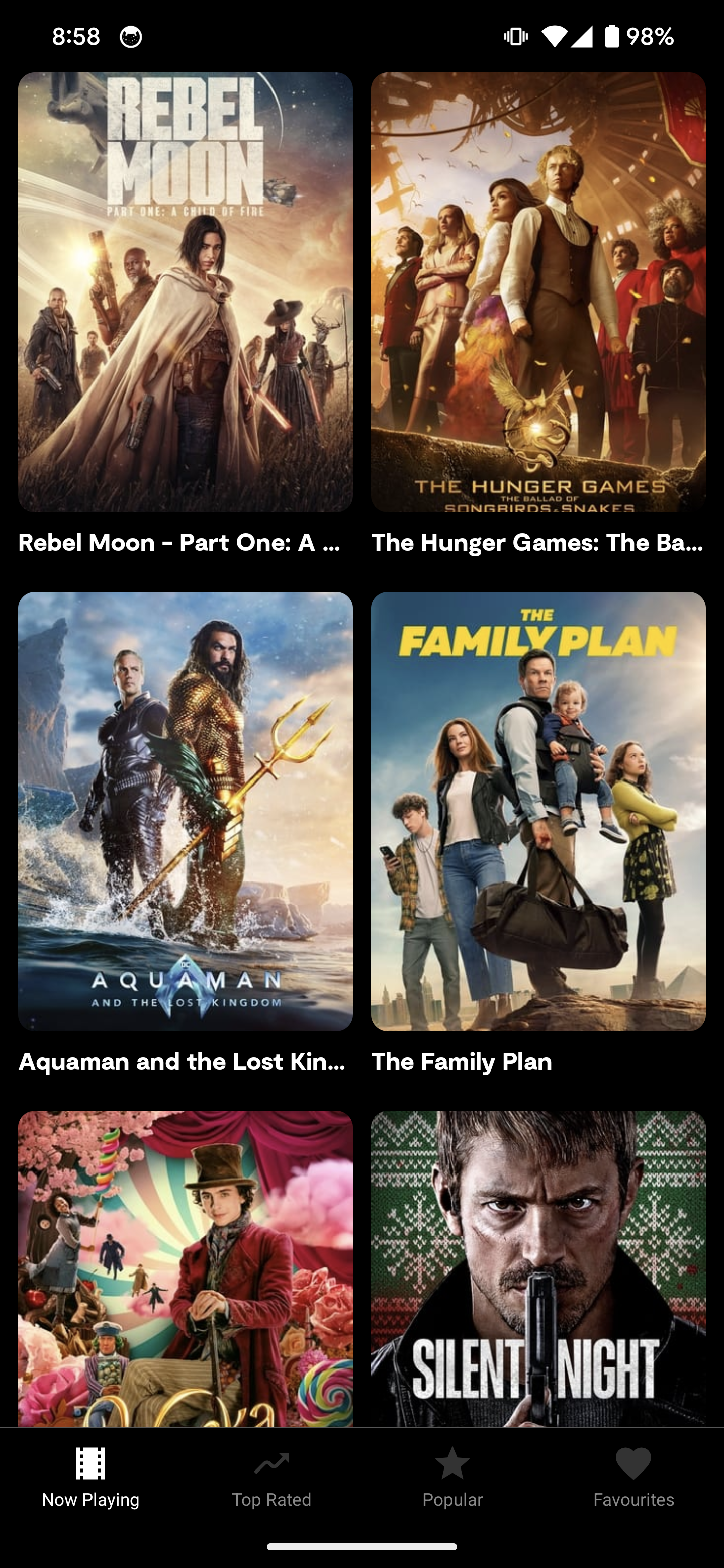 |
| Details (iOS) | Details (Android) |
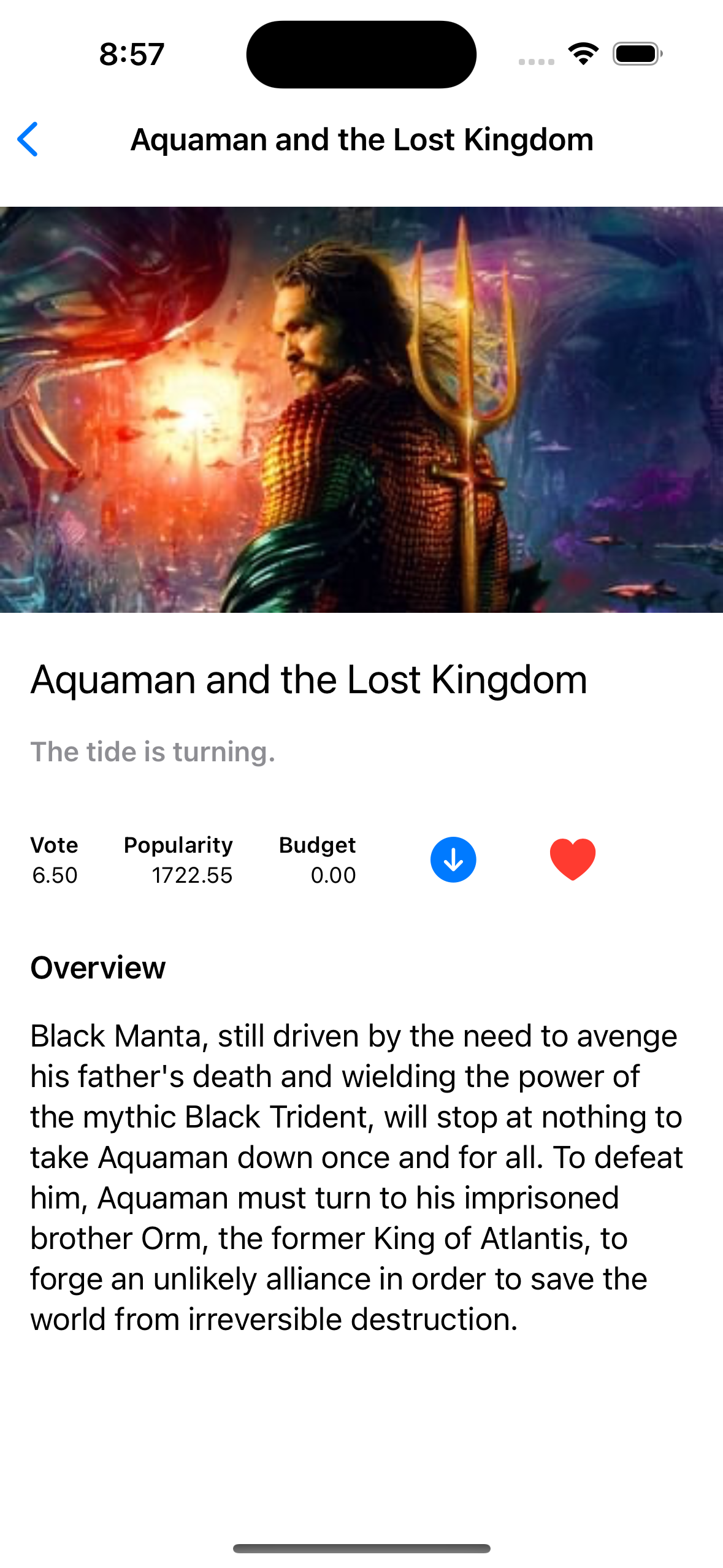 |
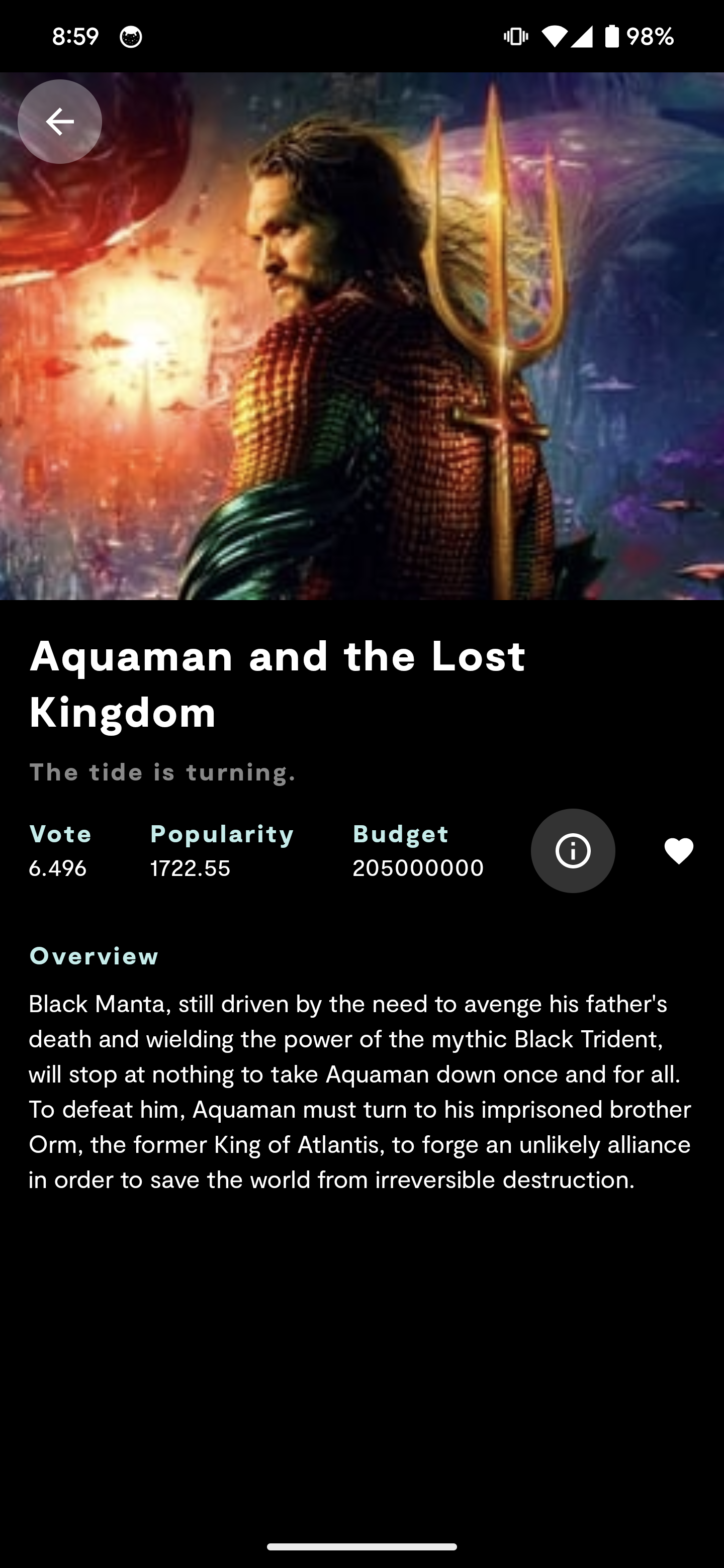 |
Open the project in Android Studio and switch the view from Android to Project to see all the files and targets belonging to the project:
Your Kotlin Multiplatform project includes 3 modules:
This is a Kotlin module that contains the logic common for both Android and iOS applications, that is, the code you share between platforms.
This shared module is also where you’ll write your Kotlin Multiplatform code.
In shared/src/commonMain/kotlin/App.kt, you can find the shared root @Composable function for your app.
It uses Gradle as the build system. You can add dependencies and change settings in shared/build.gradle.kts.
The shared module builds into an Android library and an iOS framework.
This is a Kotlin module that builds into an Android application. It uses Gradle as the build system.
The androidApp module depends on and uses the shared module as a regular Android library.
This is an Xcode project that builds into an iOS application.
It depends on and uses the shared module as a CocoaPods dependency.
In local.properties file:
- Generate the API key from The Movie Database API, place the key as
api_read_access_token=<YOUR_API_KEY_HERE>. - Create a unique passphrase for SQLCipher encryption and add as
db_encryption_pass=<YOUR_API_KEY_HERE>.
If you are forking the project and want the build through Github Actions, add the above keys as secrets.
To run your application on an Android emulator:
-
Ensure you have an Android virtual device available. Otherwise, create one.
-
In the list of run configurations, select
androidApp. -
Choose your virtual device and click Run:

Alternatively, use Gradle
To install an Android application on a real Android device or an emulator, run ./gradlew installDebug in the terminal.
To run your application on an iOS simulator in Android Studio, modify the iosApp run configuration:
-
In the list of run configurations, select Edit Configurations:

-
Navigate to iOS Application | iosApp.
-
In the Execution target list, select your target device. Click OK.
-
The
iosApprun configuration is now available. Click Run next to your virtual device.
You can run your Kotlin Multiplatform application on a real iOS device for free. To do so, you'll need the following:
- The
TEAM_IDassociated with your Apple ID - The iOS device registered in Xcode
Note Before you continue, we suggest creating a simple "Hello, world!" project in Xcode to ensure you can successfully run apps on your device. You can follow the instructions below or watch this Stanford CS193P lecture recording.
How to create and run a simple project in Xcode
- On the Xcode welcome screen, select Create a new project in Xcode.
- On the iOS tab, choose the App template. Click Next.
- Specify the product name and keep other settings default. Click Next.
- Select where to store the project on your computer and click Create. You'll see an app that displays "Hello, world!" on the device screen.
- At the top of your Xcode screen, click on the device name near the Run button.
- Plug your device into the computer. You'll see this device in the list of run options.
- Choose your device and click Run.
- Support it by clicking the ⭐️ button on the upper right of this page. ✌️
MIT License
Copyright (c) 2024 Pushpal Roy
Permission is hereby granted, free of charge, to any person obtaining a
copy of this software and associated documentation files (the "Software"),
to deal in the Software without restriction, including without limitation
the rights to use, copy, modify, merge, publish, distribute, sublicense,
and/or sell copies of the Software, and to permit persons to whom the
Software is furnished to do so, subject to the following conditions:
The above copyright notice and this permission notice shall be included
in all copies or substantial portions of the Software.
THE SOFTWARE IS PROVIDED "AS IS", WITHOUT WARRANTY OF ANY KIND, EXPRESS OR
IMPLIED, INCLUDING BUT NOT LIMITED TO THE WARRANTIES OF MERCHANTABILITY,
FITNESS FOR A PARTICULAR PURPOSE AND NONINFRINGEMENT. IN NO EVENT SHALL THE
AUTHORS OR COPYRIGHT HOLDERS BE LIABLE FOR ANY CLAIM, DAMAGES OR OTHER LIABILITY,
WHETHER IN AN ACTION OF CONTRACT, TORT OR OTHERWISE, ARISING FROM, OUT OF OR IN
CONNECTION WITH THE SOFTWARE OR THE USE OR OTHER DEALINGS IN THE SOFTWARE.











